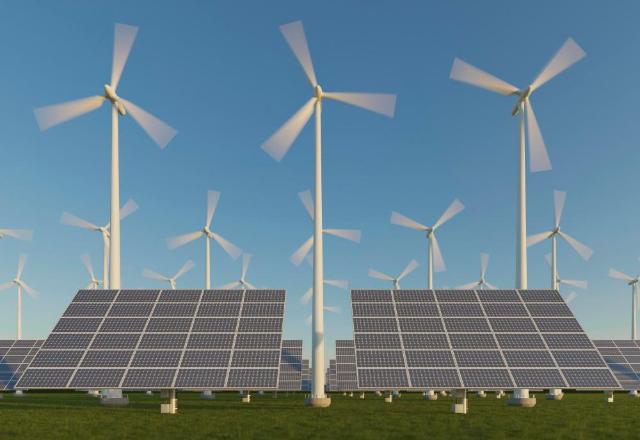Integrating Renewable Energy Sources with EV Charging Stations
As electric vehicles (EVs) gain popularity, the demand for accessible and sustainable charging options is rising. While EVs are already a step toward reducing our carbon footprint, powering them with traditional energy sources can still contribute to pollution.
With the addition of a portable EV car charger, drivers can enhance their flexibility and convenience, ensuring they have charging options available even when away from dedicated station
But what does this integration look like in practice? Read on to learn how renewable energy can power EV charging stations and explore the benefits of combining these technologies.
Benefits of Integrating Renewables with EV Charging
- Reduced Carbon Emissions: The biggest win of this integration is the reduction in carbon emissions. When renewable energy is used to power EV charging stations, the emissions associated with generating electricity drop dramatically.
- Energy Independence: By generating electricity on-site through renewable sources like solar or wind, EV charging stations become less dependent on the grid. Plus, it allows businesses and municipalities to lock in lower energy costs by generating their own power rather than relying on fluctuating electricity rates.
- Grid Relief: Renewably-powered charging stations can alleviate pressure on the traditional energy grid, especially during peak times when energy demand is high. By supplementing the grid with clean energy, these stations help balance energy loads and reduce the likelihood of grid strain.
Integrating Renewable Energy Sources with EV Charging Stations
Solar-Powered Charging
Solar-powered charging stations are a practical and effective way to integrate renewable energy with electric vehicle (EV) infrastructure. The solar panels convert sunlight into electrical energy, which can then be used immediately to charge vehicles.
Solar-powered charging comes with many benefits, such as:
- Reduced Carbon Footprint: Solar-powered charging relies on clean, renewable energy from the sun, significantly cutting emissions associated with traditional power sources.
- Lower Energy Costs: By generating their own electricity, solar-powered stations can reduce reliance on the grid and lower electricity expenses over time.
- Energy Independence: Solar stations can operate even during grid outages, ensuring a consistent power supply and enhancing energy resilience.
How to Implement Solar-Powered Charging:
- Canopy Installations: Mount solar panels on canopies above EV charging spaces to harness sunlight while providing shade for vehicles.
- Rooftop Solar Arrays: Install solar panels on the roofs of nearby buildings to directly supply power to charging stations.
- Standalone Solar Chargers: Set up standalone solar-powered charging units in off-grid or remote locations where traditional power sources are limited.
- Battery Storage Integration: Combine solar panels with battery storage systems to store excess energy, ensuring the charging station can operate during nighttime or cloudy weather.
Wind-Powered Charging
Wind-powered charging is another innovative approach to integrating renewable energy with electric vehicle (EV) infrastructure. This solution is particularly effective in regions with consistent wind patterns, such as coastal areas or open rural landscapes.
Wind-powered charging benefits include:
- Sustainable Energy Source: Wind-powered charging harnesses wind energy, which is clean and renewable, reducing reliance on fossil fuels and lowering carbon emissions.
- Operational in Low-Sunlight Areas: Unlike solar power, wind energy is available even during cloudy or nighttime conditions, making it suitable for regions with less sunlight.
- Energy Independence: Wind turbines generate electricity on-site, reducing dependence on the grid and enhancing energy security, particularly in remote or off-grid locations.
How to Implement Wind-Powered Charging:
- Standalone Wind Turbines: Install individual wind turbines near EV charging stations to directly supply power from the wind. This method is ideal for locations with consistent wind patterns.
- Wind Turbine Arrays: Set up multiple wind turbines in a dedicated wind farm to generate substantial amounts of renewable energy, which can be used to power multiple charging stations or even be fed into the grid.
- Hybrid Systems: Combine wind turbines with other renewable energy sources, such as solar panels, to create a hybrid system that provides a more consistent and reliable energy supply for EV charging.
- Battery Storage Integration: Pair wind turbines with battery storage systems to store excess wind energy. Battery integration ensures a steady power supply for charging stations even during low wind periods or at night.
Energy Storage Solutions
Energy storage solutions are crucial for optimizing the use of renewable energy and ensuring a reliable power supply. It captures excess energy generated from sources like solar panels or wind turbines and stores it for later use, addressing the intermittent nature of renewable power.
Some of its benefits include:
- Enhanced Reliability: Energy storage systems ensure a consistent power supply by storing excess energy for use during peak demand or when renewable energy generation is low.
- Reduced Energy Costs: By storing energy during off-peak times when costs are lower and using it during peak periods, energy storage can help reduce overall electricity expenses.
- Grid Stability: Energy storage helps balance supply and demand on the grid, improving stability and reducing the risk of outages or blackouts.
Conclusion
The integration of renewable energy sources with EV charging stations represents a critical step in the journey toward greener cities and a more sustainable future. As the world continues to embrace electric vehicles, finding ways to power them sustainably is essential to achieving the environmental benefits they promise.

